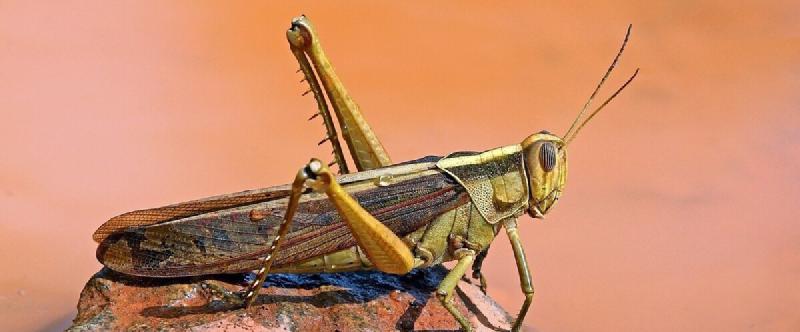Articles discussed
Catching plague locusts with their own scent - 12 August, 2020 - Nature news and views
Chemical that causes locusts to gather in swarm clouds could also be used to lure the pests to their death, scientists claim - 13 August 2020 - Daily Mail
Scientists have identified the scent that makes some locusts swarm. They could use the pheromone to trap and kill the insects - 12 August, 2020 - Business Insider
Effective science reporting should:
-
Outline the context * Gets readers interested and informs them of why they should care. * Informs readers of relevant prior research on the topic
-
Describe the lines of inquiry * Provides insight into how researchers work. * Shows readers the different problems which were overcome, or the lines of questioning which were pursued
-
Discuss the conclusions * Informs readers of the conclusions researchers came to. * Describes how researchers evaluated and interpreted the information they collected * Describes how the research might contribute to the world or society
-
Highlight areas of uncertainty and directions for future research * Gives a sense of how confident researchers are in their results and conclusions. * Outlines the limits of how generalizable results may be * Showing that the researchers are open to changing their views based on additional information.
Context
Locusts are insects related to grasshoppers most famous for their roles as a biblical plague eating the crops of Egypt. Since January locust swarms have been affecting a region spanning from North-western India to Kenya. High rainfall led to lots of vegetation growth and good breeding conditions for the locusts, which continue to affect the region now in September. (Food and Agriculture Organization of the UN)
Locusts usually live mostly solitary lives, actually tending to avoid other locusts. However they can switch to a gregarious phase where they are attracted to other locusts, gathering together and forming large groups or swarms. In August a group of scientists published a paper describing how they isolated a chemical which acts as a pheromone, causing migratory locusts to gather.
Lines of inquiry
The Daily Mail and Business Insider both report on the researchers’ work as a complete narrative of how the pheromone affects locus behaviour.
Business Insider
“But until now, scientists weren’t sure what causes the insects to come together and abandoning their solitary lifestyles. A study published Wednesday in the journal Nature pinpointed the trigger:”
The Daily Mail
“Both solitary and gregarious locusts – those that live in groups – are strongly attracted to 4VA, regardless of their age and sex. If four or five solitary locusts are housed together, they too begin to produce and emit the pheromone. This then causes swarming behaviour by attracting other locusts in the field, eventually building up a fearsome locust cloud.”
The problem with both of the reporting from Business Insider and The Daily Mail is that they both focus on the results and the implications. This is problematic because it suggests that scientists are now certain of what happens. Future research which contradicts or complicates these results could lead to confusion over which version of the narrative is ‘true’. This can also undermine confidence in scientists and institutions if the public perceives them to not be able to provide the kind of truth they have been taught to expect.
The report from Nature walks the reader through the experiments conducted by the researchers. Showing how each experiment led into the next as the team built on the information they collected. Readers are brought along the journey and can read about the evidence and how the researchers built their case.
Results and implications
The Daily Mail
“In outdoor tests on artificial turf, sticky traps baited with 4VA snared dozens of locusts released from the lab. The flat panels, to which an adhesive substance was applied, also caught locusts when deployed in a wetland reserve near Tianjin, eastern China.”
Business Insider
“But the discovery of 4VA could facilitate a more surgical approach to fighting swarms: The study authors suggest deploying a synthetic version of the scent to lure locusts into traps where they can be killed. They tried this on a small scale, baiting sticky traps with 4VA. They trapped dozens of locusts.”
Both of these perspectives do give the reader some sense of how the researchers know that pheromone traps can be effective. But again the focus is on the positive result. This could give the impression that this is straightforward or that a synthetic version already exists when it is actually just a direction for future research. This could again undermine trust in scientists by giving the impression that solutions to problems are being withheld.
Uncertainties and directions for future research
The Nature piece highlights the limits of the information they gathered in their experiments. This primes readers to expect that additional information will likely emerge which could change how these results are interpreted. Readers are primed to handle this future scenario as building a more complete picture rather than as falsification of what had been touted as truth.
Related reading
Questions? Comments? Get in touch here.



